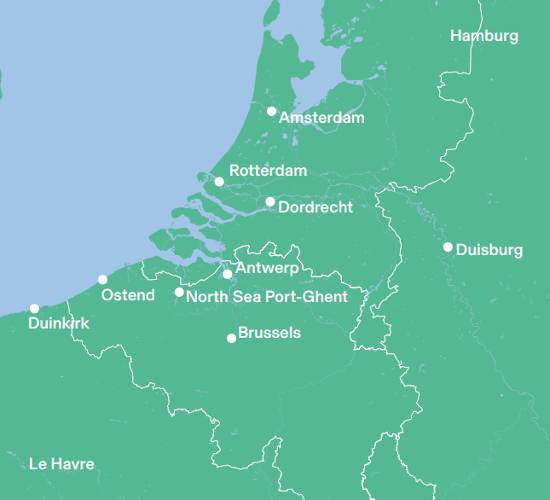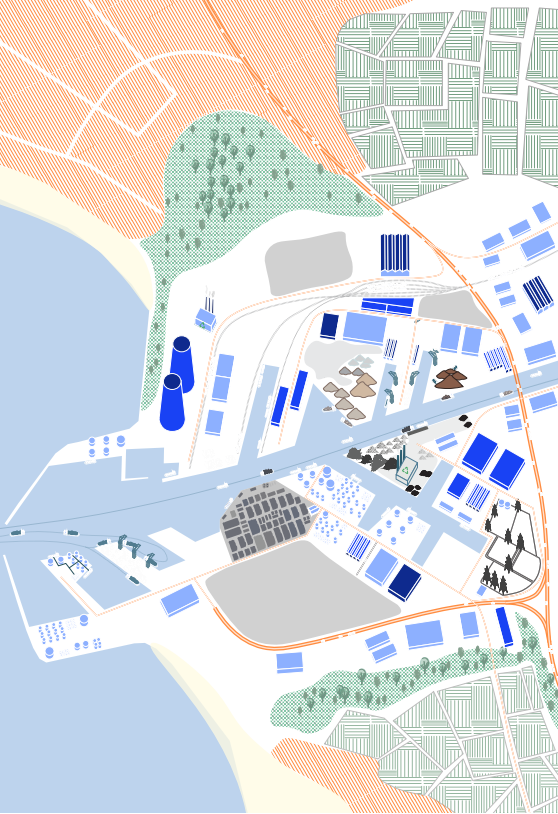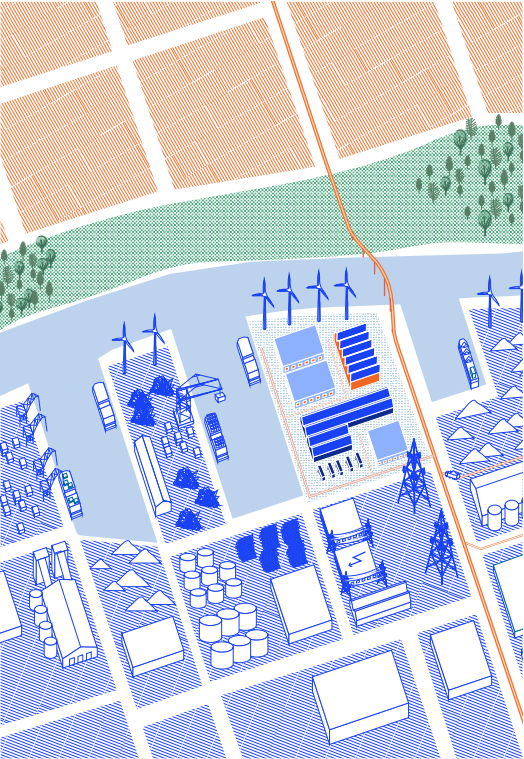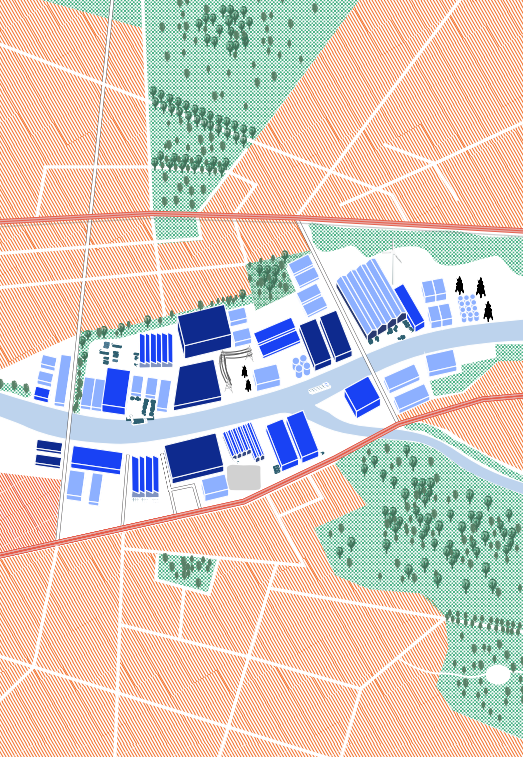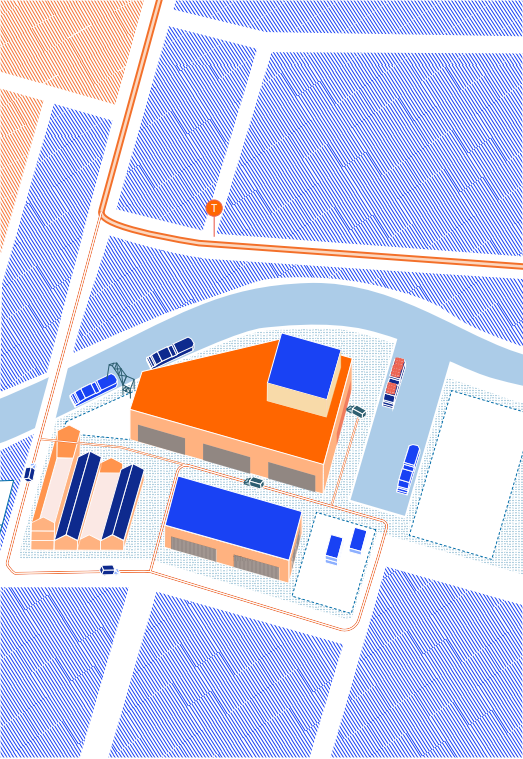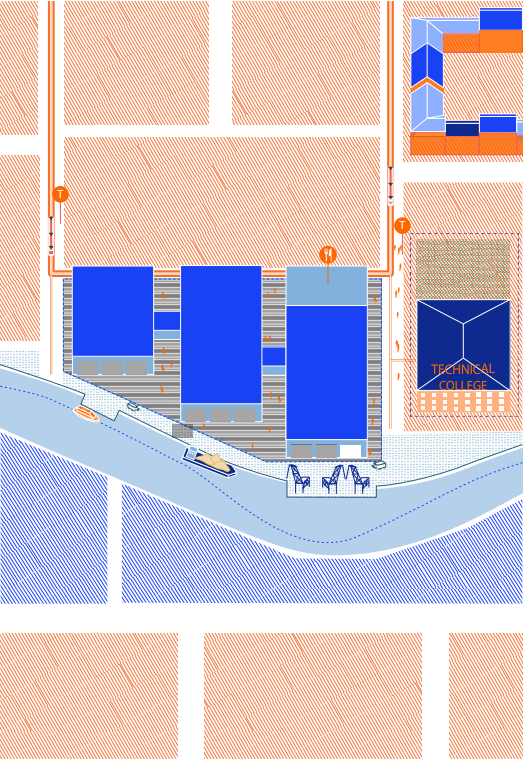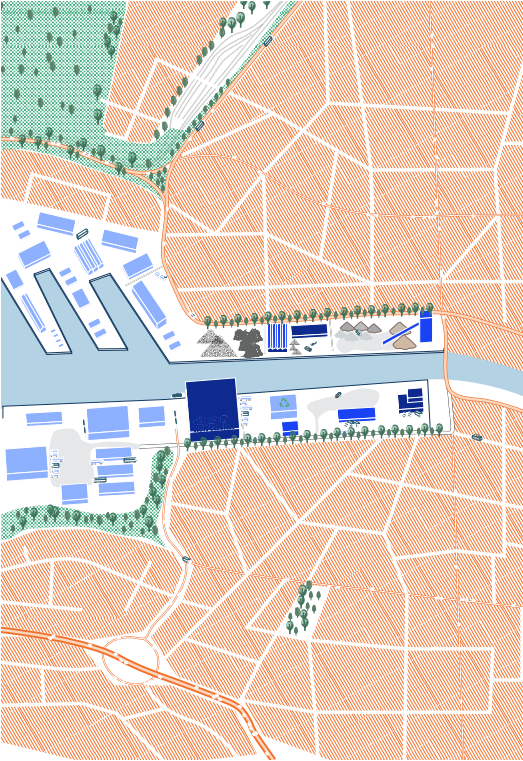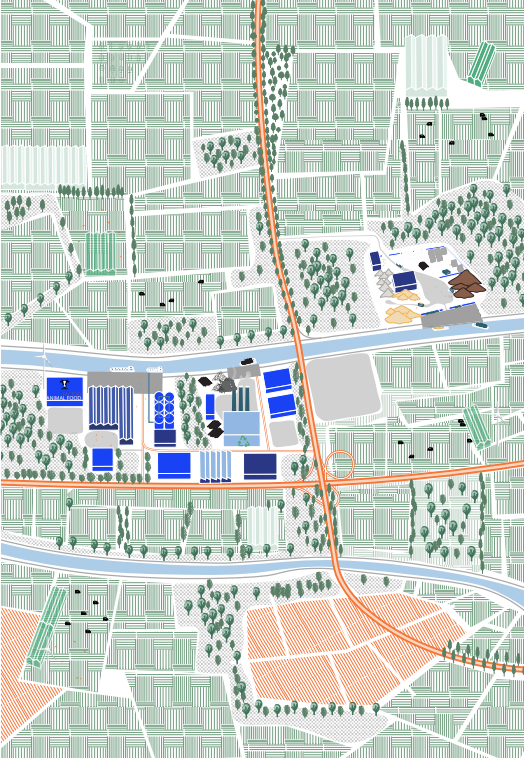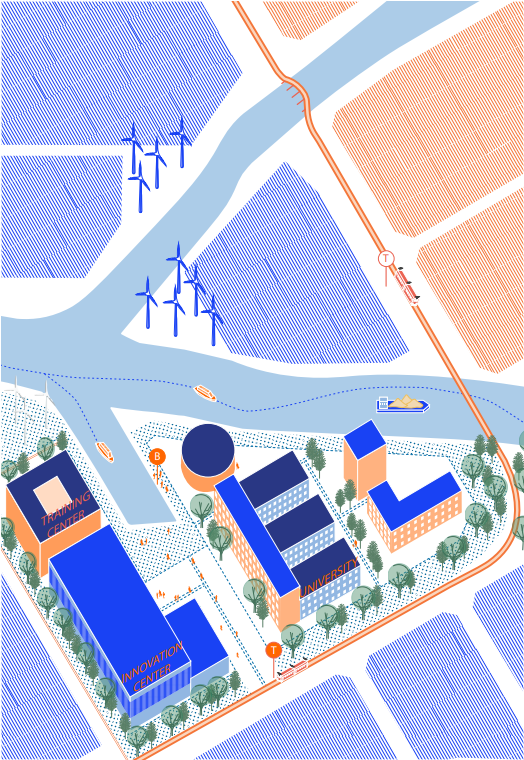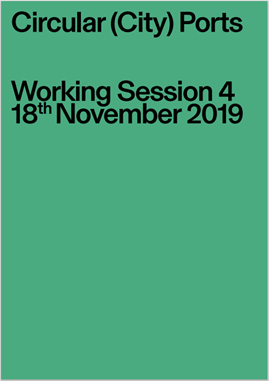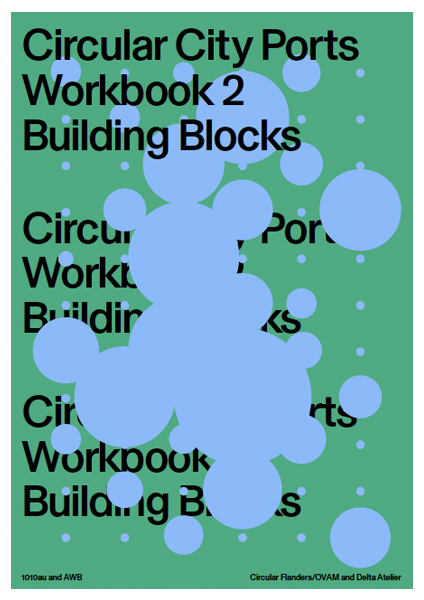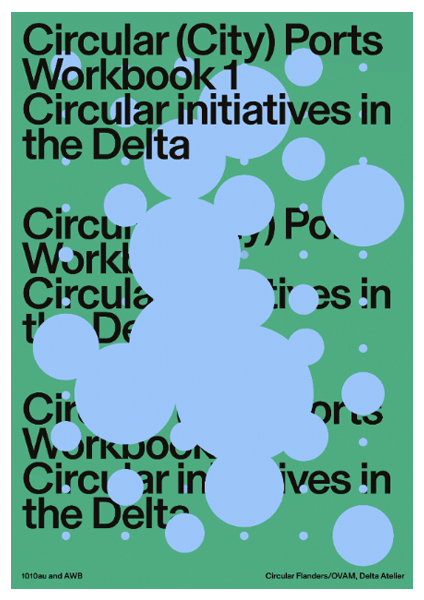Together with Delta Atelier, we have embarked on a journey of dialogue, exploration and knowledge sharing around the challenge of circular (urban) ports. Explore this journey supported by several working sessions, debates, research and exhibitions in the context of the ‘cultural space’ created by the International Architecture Biennale Rotterdam and its Brussels component You Are Here. While some of the proposed actions were temporary, others have become permanent and tangible.
Let’s learn from ongoing practices
to guide future changes
Learning is more than collecting as many practices as possible. The beating heart of a continuous learning process is observing and analyzing practices in the (city) ports and port regions, following the dynamics and making the insights transferable. Mapping and analyzing a variety of practices helps to generate new insights in the here and now as well as new challenges and opportunities to be addressed in the future.
Exploring circular initiatives and projects from (city) port regions
The exploratory research started by collecting various circular initiatives and projects from 11 (city) ports in the Delta, before analysing and structuring them. The concept of circularity and (city) port was explored from different perspectives and aspects, and insights were gathered through interviews, debates and various working sessions.
The research of the initiatives and projects (cases) led to a better understanding of the state of innovation, as well as the individual and common needs for knowledge and support in relation to a structured transition to circular ports.
Joachim Declerck – Partner Architecture Workroom Brussels – on the lessons learned from the exploration phase
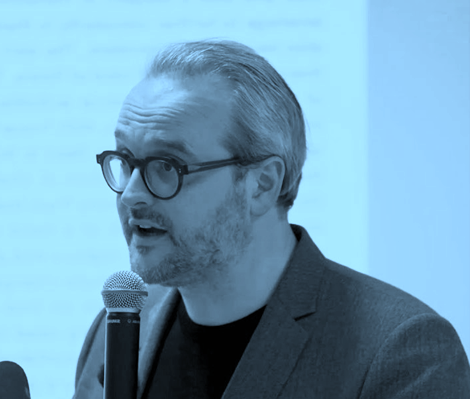
The Case Collection
The explorative research was based on a benchmarking of 11 (city) ports in the Delta. The focus was on the actors and the system as an entry point to retain a broad perspective in the reading of (city) ports.
The process started with desktop research, enriched by interviews with key professionals, and served as input for a series of working sessions and debates. The sessions resulted in a documented case files, a comparative analysis (both descriptive and visual), an identification of the barriers and levers that (city) ports face in advancing circularity, and a first set of recommendations.
From documenting, collecting and understanding initiatives and projects (cases), the next step was to explore new strategies, stimulating frameworks and concrete actions in and for Circular (City) Ports.
Introducing eight Circular Building Blocks
Transferring individual practices – as they are – usually doesn’t work. Instead, core ideas, objectives, some elements of the process and modalities are more likely to be transferred and/or adapted to a new context. In addition, equivalents of some elements can be found that may work better in a specific context.
In exploring the possibilities for transferability and adaptability, eight ‘prototypical milieus or situations’ were finally identified that can be discerned in delta (city) ports. These ‘milieus’ are referred to as ‘building blocks’. They are a first step in identifying which elements will integrate the complex and constantly adapting assemblages that the port will need to create a circular ecosystem. Although not all of these building blocks are necessarily present in all of the selected (city) port areas, they capture the vibrancy of the answers that (city) ports and water-based areas provide to their explicit circularity objectives.
The hypothesis of the ‘building blocks’ is demonstrated here using a imaginary port-city corridor where a series of differentiated milieus coexist and create synergies to function as a circular system.
Nadia Casabella – Partner 1010 architecture urbanism – introducing Circular Building Blocks framework and content

You cannot build a circular (city) port system by simply stacking isolated projects and practices. Within these practices, we identify and explore certain prototypical milieus, situations or ‘building blocks’ to better understand not only the coexistence, but also the interactions and synergies in an overall circular system.
Discover the Circular Building Blocks
1. Capacity Fields
The diverse industrial and logistical areas located next to the waterway network offer good potential for synergies. In the Capacity Fields, we are close to the sea, with deeper waters, berths, facilities and operational techniques typical of coastal ports. They fulfil important hub functions for containerized cargo and the transhipment of goods (e.g. liquid and dry bulk) that are not exclusively oriented towards the regional economy. The ‘greening’ of port activities and flows and the overall transition to a post-oil economy is a potential competitive advantage for these areas. They have the infrastructural capacity to support the growth of emerging industries with a focus on the circular economy, and to promote interactive development with the coastal and shipping industries, as well as with the outgoing (petro)chemical industries they may host.
2. Island of Urbanity
Regions can benefit from ports located in their territory, at least if their ports perform well and are properly embedded in the regional economy. They can add value to the region, but they tend to have relatively limited indirect economic effects because of the disconnect between the flows of goods and materials and the high value-added activities associated with those goods, such as advanced services, innovation and knowledge-intensive employment. The Island of Urbanity comes to fill this gap. This building block is a kind of hub for the creation of a regional community, where the presence of a network of firms and institutions will support the linkages between throughput flows and locally available expertise. It increases the proximity and collaboration between firms, which is essential to develop localized skills, support collective learning and ensure competitiveness.
3. Canal Clusters
A cluster is an ideal type of institutional and economic structure involving collaboration between different actors and businesses, usually operating within a discretely defined industry. The Canal Cluster is a specific type of economic agglomeration that can include businesses in the maritime sector (from bunkering and shipping agencies to ship or container repair and maintenance or dredging) or any other industry – typically construction, recycling and food processing. A ‘park manager’ ensures the development of synergies between these industries, also in terms of industrial symbiosis. He or she helps to link businesses operating in similar or related sectors, and these businesses with knowledge support organisations. Such a cluster is located along a waterway, usually near a city. The waterway is often underused.
4. Incubator
For the sustainable success of the port ecosystem, it is essential to understand each stage of its development in order to help it evolve over time and catch up with breakthroughs that are difficult to anticipate. The Incubator is used to refer to those innovative businesses that can fill the gap between innovative small businesses (niches) and the large-scale industrial and logistics environment characteristic of ports. The Incubator consists of a mix of businesses, combining established companies, (specialized) services and start-ups. They offer financial and organizational support to early-stage start-ups and early-growth businesses to help them scale up and adapt to the global concurrence that partly governs the port ecosystem, and provide them with adapted infrastructure (e.g. testing centres and laboratories).
5. Local Job Generator
At the interface between the port and the city, often occupying structures left behind by the continuous expansion of logistical activities in the port. New pools of skilled labour are emerging in the port. Jobs in these Local Job Generators take advantage of both the material flows that pass through nearby and the maritime skills that may be left behind, such as those related to ship repair or working with wood and metal. They sometimes develop synergies with nearby neighbourhoods in terms of job placement and training (e.g. food processing, furniture making), as well as in the types of products that can be processed locally, such as recycled textiles or electronics. And sometimes they operate as autonomous zones with links to areas far beyond the immediate neighbourhood.
6. Urban Trieur
Port areas have traditionally attracted a mix of recycling and distribution companies due to their easy logistical access and the availability of large areas for large volumes of products and waste. The Urban Trieur is home to activities ranging from the distribution of products destined for the urban economy (from building materials to consumer goods), to the handling of waste (collection, storage and sorting), and even its treatment on site (including repair and recycling). These fast-growing activities claim their strategic position close to urban markets and waste streams. The size is modest, meaning that it can only handle relatively small volumes at a time, while relaying on other sites along the port corridor for consolidation and possible further treatment.
7. Hinterland Hub
The Hinterland Hub is the best example of the many opportunities offered to ports by the redesign of global value chains, combining traditional maritime activities, such as cargo handling, with activities in other economic sectors, such as energy or agriculture. On the one hand, this Hub can operate as a transhipment point for goods and raw materials coming from the port, which are then distributed to the hinterland, where they may be further processed or customised to capture some of their added value. On the other hand, it can operate as a specialized location in the agri-food sector, capable of upgrading organic waste streams and raw materials from the surrounding agricultural areas for energy generation (e.g. green biorefinery) and the production of new bio-based materials (e.g. bioplastics from cellulose, bio-construction materials, etc.).
8. Knowledge District
Regional economic benefits could be generated through innovation and value-added activities.The Knowledge Districts are the breeding ground for start-ups working on breakthroughs in areas such as lifecycle environmental impact (including of ships), autonomous shipping, Internet of Things, biochemicals and energy diversification (including transport). They are characterized by the involvement of academic research institutes and typically support new ventures that emerge from them. They depend on funding to bring together public and private actors in a collaborative network that integrates cross-sectoral activities and supports local applied testing and pilot projects.
